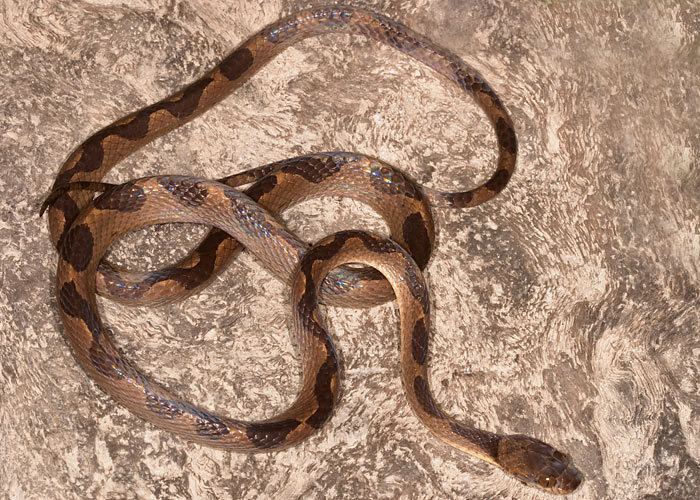Suborder Serpentes Subfamily Xenodontinae Higher classification Leptodeira | Subphylum Vertebrata Genus Leptodeira Phylum Chordata Rank Species | |
 | ||
Similar Leptodeira, Snake, Reptile, Colubridae, Imantodes cenchoa | ||
Banded cat eyed snake leptodeira annulata
The banded cat-eyed snake (Leptodeira annulata) is a species of medium-sized, mildly venomous, colubrid snake endemic to the New World.
Contents
- Banded cat eyed snake leptodeira annulata
- Banded cat eyed snake leptodeira annulata culebra de pantano culebras de colombia
- Common names
- Geographic range
- Description
- Venom
- Habitat
- Behavior
- Diet
- Reproduction
- Subspecies
- References

Banded cat eyed snake leptodeira annulata culebra de pantano culebras de colombia
Common names

Additional common names include: cat-eyed night snake, come sapo, culebra de pantano, culebra destenida, machete savane, mapana de agua, mapana tigre, and ranera.
Geographic range

It is found in Mexico, Central America, and South America, including the offshore islands of Margarita, and Trinidad and Tobago.
Description

Adults are about 750 mm (30 in) long and very slender. The head is distinct from the neck, and the large eyes have vertically elliptic pupils. The back is yellowish or brown with a series of dark brown or blackish spots often confluent into an undulous or zigzag stripe.
Venom
It has a pair of enlarged, grooved teeth at the rear of each upper jaw (maxilla), and produces a mild venom.. The venom affects the snake's natural prey (mainly small frogs and small lizards). The snake tends not to bite humans when handled, but when it does, the venom has relatively mild effects in most individuals (some describe it as a slight irritating/itching sensation with slight swelling). The snake is not considered a risk to human health.
Habitat
It inhabits moist areas. The snake tends to be found in forest (moist and dry forest) as well as in areas near forest edge (including well vegetated urbanized areas near forest edge). They are often associated with riparian zones, as well as the margins of swamps and marshes.
Behavior
Leptodeira annulata is nocturnal, and it hunts and feeds in trees and on the ground.
Diet
It preys on frogs, frog eggs, salamanders, and small reptiles such as lizards. It may also feed on fledgling birds.
Reproduction
Snakes of the genus Leptodeira are oviparous, sometimes exhibiting delayed fertilization.
Subspecies
Two subspecies are recognized, including the nominotypical subspecies.
The subspecific name, ashmeadi, is in honor of Hallowell's "friend Mr. Samuel Ashmead".
